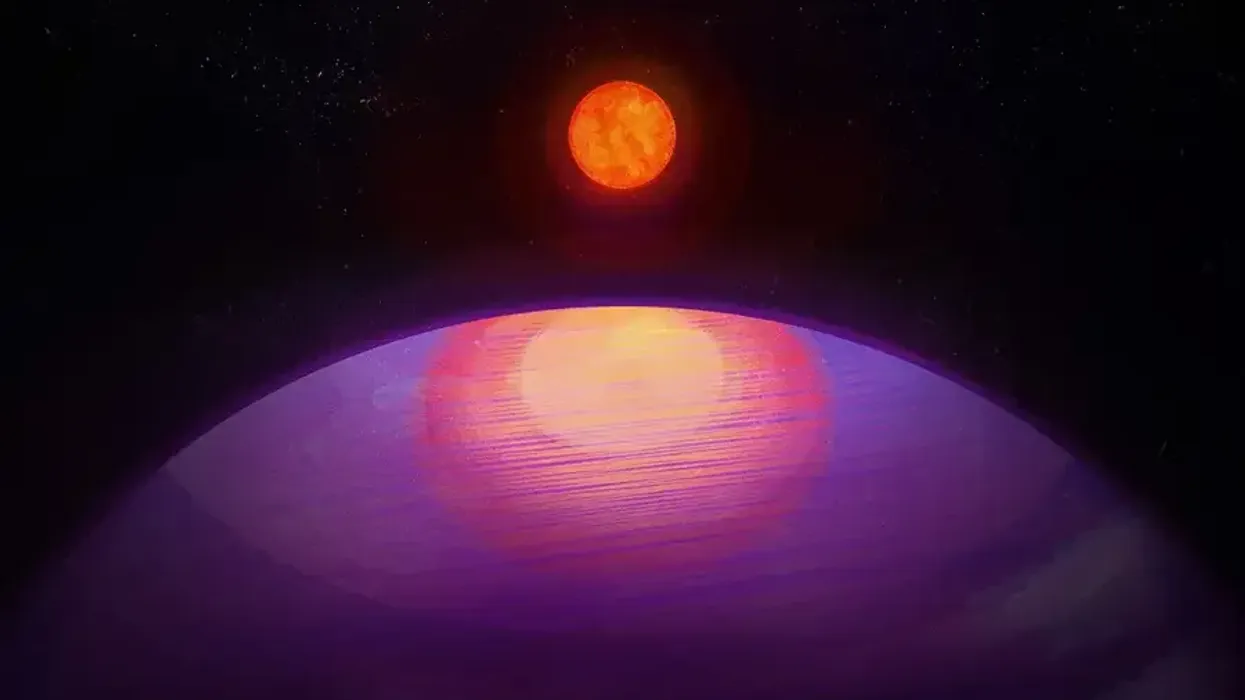Alex Daniel
Dec 01, 2023

An artist’s rendering of the view from LHS 3154b towards its tiny host star
Penn State University
Scientists have been left scratching their heads after finding a planet that is far too big for its sun, upending our current understanding of how solar systems form.
The planet, named LHS 3154b, has a mass at least 13 times that of Earth. It orbits the star LHS 3154, which is nine times smaller than our sun.
Astronomers aren’t so much confused by the size of the planet – it’s a pretty normal size – but it shouldn’t be orbiting a star that small.
The star it is moving around is an ultracool dwarf star, which is among the smallest and coldest varieties of stars in the universe.
This shouldn’t be happening.
The pair have a mass ratio 100 times higher than that between the Earth and the sun, and it is way beyond the limit which current theories of planetary formation predict.
Prof Suvrath Mahadevan, of Penn State University, who co-authored the research, said: “This discovery really drives home the point of just how little we know about the universe. We wouldn’t expect a planet this heavy around such a low-mass star to exist.”
Stars draw large amounts of gas and dust when they are formed. These rotate around it in a disc shape, and some of the material can fuse together to eventually become planets.
But Prof Mahadevan said the disc around LHS 3154 should not, by rights, have enough solid mass around it to make such a large planet.
The amount of dust in the disc would need to be at least 10 times greater than what was observed to form LHS 3154b.
He said: “At this close in of an orbit, we’ve never seen anything like this. We didn’t believe that something so small, such a dinky star, could have such a large planet.”
The fact that LHS 3154 is an ultracool dwarf star means it has low temperatures compared with other stellar objects, such as our sun.
Experts say this means planets which are capable of having liquid water on their surface will be closer to their star in comparison to Earth and the sun.
Prof Mahadevan said: “Think about it like the star is a campfire. The more the fire cools down, the closer you’ll need to get to that fire to stay warm.
“The same is true for planets. If the star is colder, then a planet will need to be closer to that star if it is going to be warm enough to contain liquid water.”
The researchers used an instrument called the Habitable Zone Planet Finder (HPF), which is located at the Hobby-Eberly Telescope at the McDonald Observatory in Texas, to pick up the planet.
Prof Mahadevan said: “What we have discovered provides an extreme test case for all existing planet formation theories.
“This is exactly what we built HPF to do, to discover how the most common stars in our galaxy form planets – and to find those planets.”
How to join the indy100's free WhatsApp channel
Sign up to our free indy100 weekly newsletter
Have your say in our news democracy. Click the upvote icon at the top of the page to help raise this article through the indy100 rankings.
Top 100
The Conversation (0)













